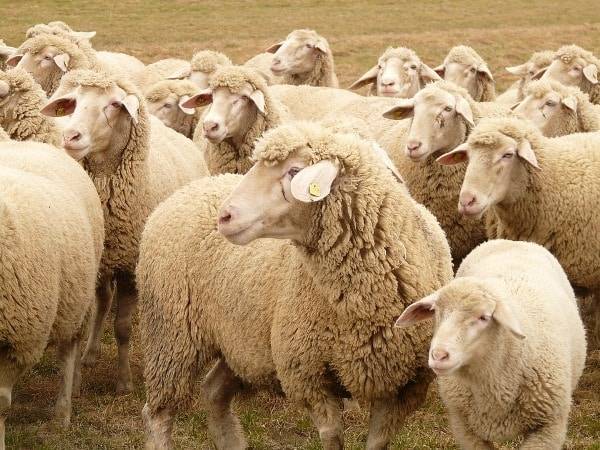Alternative fibre source for sheep feedlot fattening to enhance mutton production

Stay tuned with 24 News HD Android App

Livestock is a subsector of agriculture in Pakistan that contributes about 58.3% to agriculture and nearly 11.4% to the gross domestic product of the country. Sheep and goats categorized as small ruminants have different feeding behaviour, both these play an important role in the sustainability of smallholder farmers, impoverished families fulfil their expenditures from small ruminant rearing, especially in rural areas.
These animals owe their popularity to their multi-purpose ability to provide meat, milk, skin, offal, horn, and dung for fuel, wool, and fibre. The importance of this sector can be understood by the fact that approximately 30-35 million rural populations are directly or indirectly involved with the sector to earn their livelihood. The country is blessed with 30.1 million heads of sheep and is mainly reared on pasture grazing by landless small-scale farmers.
However, associated factors with poorly growing pastures such as unpredicted nutritional profile, higher lignin contents, lower energy contents, and source of parasitic infestation are resulting in lower growth performance with higher morbidity as well as mortality rates. An increase in mutton demand to fulfil the protein requirements of the increasing human population prompted farmers to venture into commercial sheep production.
Globally feedlot fattened sheep is attaining >250 g/d live weight which is far away from local traditional fattened sheep >150g/d. The major constraint is component feeding (Separate straw and concentrate) which is not able to sustain the high growth or production of meat. Internationally fattening sheep are being fed on high concentrate feeding regimens like pelleted total mixed ration.
Pelleted total mixed ration comprised of concentrate ingredients and fine ground straw. The ground straw portion provides the fibre fraction which increases the rumination and salivary bicarbonate contribution to prevent metabolic disorders by stabilizing the ruminal pH.
However, the inclusion of ground straw dilutes the dietary energy contents, lower digestibility, increases the production cost and finally complicates the pelleting process. Agro-industrial byproducts like soyhulls are fibre-enriched products and could be used as an alternative fibre source in such dietary regimens. However, the potential of soyhulls as an alternative fibre source and sheep response is still not clear.
For this, a series of two experiments were carried out to provide an assessment of the potential soyhulls as an alternative fibre source in intensive fattening diets for sheep. This research project was funded by Punjab Agricultural Research Board [PARB 650]. This research was conducted under the supervision of HEC-recognized Associate Professor Dr Muhammad Afzal Rashid. The experimental animals were Lohi sheep which were reared for 91 days in experiment 1 and 70 days in experiment 2.
In the first experiment, growing lambs were fed on three pelleted diets including a diet containing 25% ground Rhodes grass hay only as a fibre source (control), containing 15% soyhulls and 15% Rhodes grass hay as a fibre source (SH-15) and a pelleted diet containing only 25% soyhulls as a fiber source (SH-25). In the second experiment, finishing lambs were fed on three physical forms of a diet containing soyhulls as a fibre source.
The dietary forms were 1) mash form, 2) texturized form and unprocessed form. After rearing, animals were slaughtered to evaluate meat characteristics and changes in the digestive system. The findings of the research were outstanding, in the first experiment we successfully replaced Rhodes grass hay with soyhulls without any negative impact on growth performance, behavioural responses, ruminal health, and meat quality.
Moreover, consume more feed than those fed conventional total mix ration. In the second experiment, we achieved > 220 g/d live body weight from those finishing lambs fed on the unprocessed form of the complete diet. Moreover, feeding behaviour, nutrient utilization and economic viability were also improved for those finishing Lohi lambs fed on an unprocessed form of the diet.
The other benefits of this feeding intervention are a continuous supply of nutrients, minimum wastage of feed, lesser labour required, and low cost of production. Meat characters data indicated that higher meat percentage and higher fat contents (marbling score), which gives a pleasant taste to the meat.
Feeding an unprocessed form diet has no adverse effects on the blood composition and digestive system of the sheep. So far keeping in view the results of the current project we encourage to feed industry and sheep farmers the adaption to this feeding intervention. This feeding intervention could improve sheep fattening farming and farm profitability.
Written by Muhammad Khan and Muhammad Afzal Rashid (PhD scholar, University of Veterinary and Animal Sciences, Lahore)
